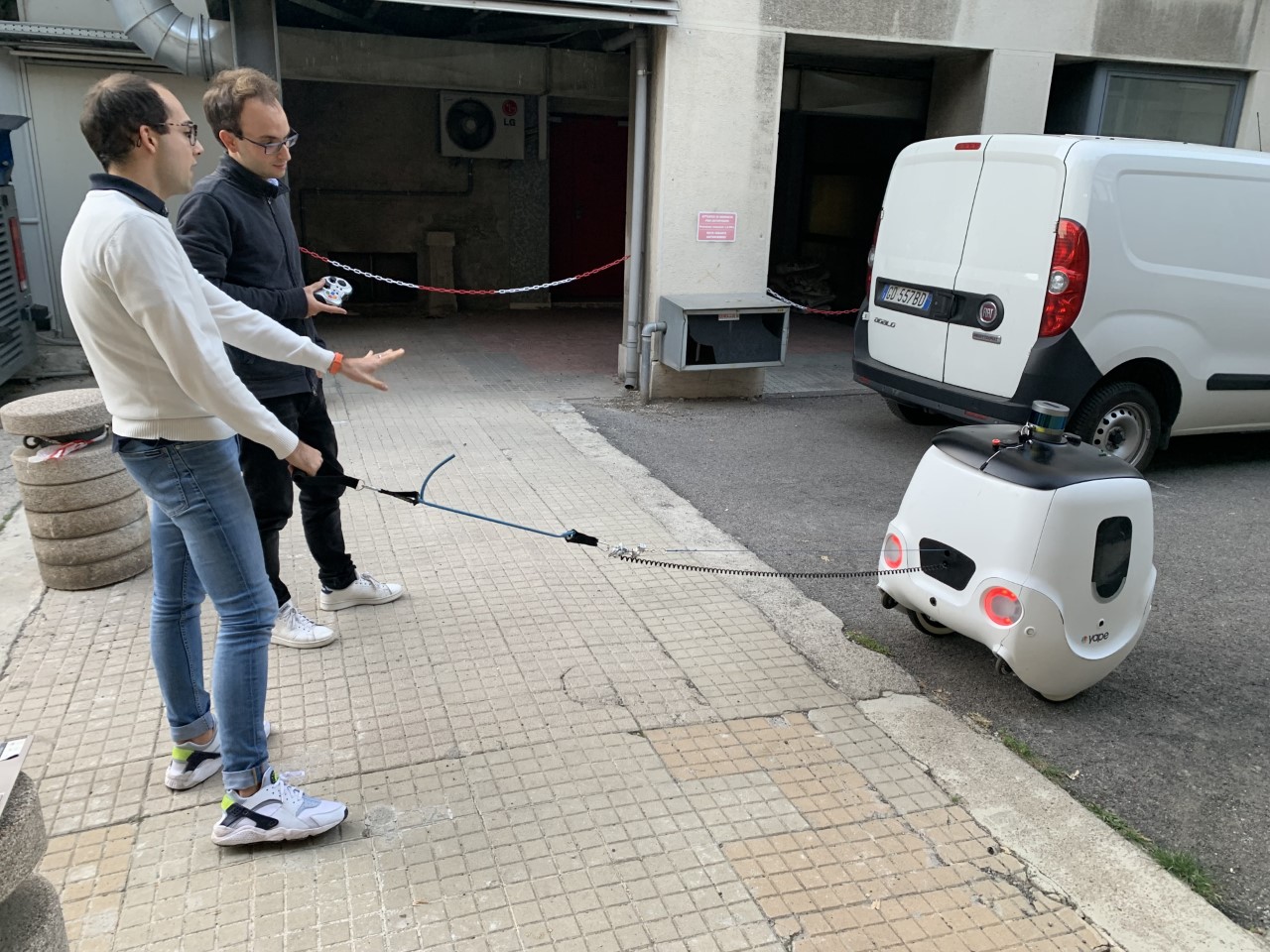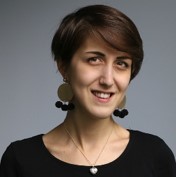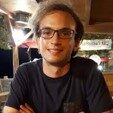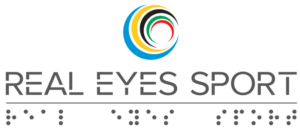BUDD-e
Blind-assistive aUtonomous Droid Device
PROJECT
Goals
The BUDD-e project involves a multidisciplinary research team (with expertises, e.g., in ICT, Robotics, and Architectural Design) to pursue a twofold ojective:
- design and realize a first prototype of the innovative autonomous robotic guide BUDD-e for blind and visually impaired persons, endowed with an innovative human-robot interface;
- design accessible and inclusive public places and indoor environments where BUDD-e can take the role of a guide for BVI persons and permit the fruition of the offered services.
The application scenarios include public spaces where the users will be able to reserve BUDD-e and use as an autonomous guide, e.g., hospitals, sport centers, shopping centers, parks, cultural centers.
Experimental validation tests are currently conducted in healthcare facilities (ASST Grande Ospedale Metropolitano Niguarda) and in sport centers (Centro Sportivo Giuriati, Milano).
Motivation
COVID-19 pandemics and related politics have strongly impacted on people’s life and, even more dramatically, that of vulnerable groups, e.g., people with visual impairment. The possibility to cultivate healthy relationships, take part to social events and activities, and to frequent public spaces has been restricted. Even everyday activities (e.g., use public services, shopping, practice sports) have been severely limited in the past 18 months.
According to the World Health Organization, BVI persons have particularly suffered from the COVID19 emergency and are still dramatically affected by the containment measures, being also particularly prone to the contagion risk. This is due to the fact that BVI need tactile contact with the environment and a guide for moving and orienteering.
People with visual impairment are 4% of the planet population (about 253 Millions). In Italy, they are just under 2 Millions among which 219,174 are absolutely blind (0.3% of the population), while 1,383,922 (2.3%) have a visual residue. Between 2010 and 2030 an increase of people with visual disabilities is expected by about 25% due to the population aging.
This large vulnerable group of persons has compelling and urgent needs to recover from the emergency social situation derived from the COVID-19 pandemics and to mitigate for the inequalities which have been exacerbated by it. This can be fostered by assistive technologies and inclusive environments.
OBJECTIVES



USER-CENTERED DESIGN
We have conducted a context analysis to highlight the desired features of the autonomous guide and the opportunities of improvement of spaces in terms of accessibiity. In particular, focus groups have been organized and questionnaires have been developed to analyze the needs of users and of the spaces. A final report (in Italian) is available here: “Questionari e Focus Group_Report“.





REALIZATION
BUDD-e is composed of:
– The autonomous vehicle YAPE, endowed with LIDAR sensors, cameras, and IMUs for autonomous driving and interaction with a highly populated and dynamic environment.
– A novel “smart tether system” for managing the human-robot interaction. It is endowed with a tether for connecting the robot and the users.







APPLICATION SCENARIOS
Analysis and design of accessible spaces is also a goal of BUDD-e. This goal will be achievedthrough the application of inclusive and user-centred architectural concepts that will allow to:
– Characterize the needs of orientation and signage;
– Define the optimal spatial and functional features;
– Innovate the fluxes and constraints with respect to the accessibility and usability of the spaces
The results will lead to an improved user experience in hospitals, sport centers, showpping centers, etc.






NEWS
- The following scientific papers are dedicated to the project results:
- A. Rebecchi, M. Farina, G. Andreoni, L. Bascetta, S. Capolongo, M. Corno, A. Di Francesco, M. Galli, M. Gola, P. Perego, E. Lettieri, “Shaping accessible public spaces for visually impaired people. The BUDD-e research experience“, Journal of Technology for Architecture and Environment (TECHNE).
- M. Farina, P. Rattamasanaprapai, P. Marson, F. Camuncoli, M. Galli, “Design, realization, control, and validation of a smart tether system for a robotic guide for blind and visually impaired users”, IFAC World Congress 2023, July 9-14, Yokohama, Japan.
- M. Farina, E. Lettieri, T. Filippi, F. Zoccarato, P. Perego, A. Di Francesco and G. Toletti, “The freedom to run: developing an autonomous robot matching the needs of visually impaired citizens to technology opportunities“, Disability and Rehabilitation: Assistive Technology.
- J. Li, M. Corno, M. Farina, “A method to detect the sudden stopping in an assistive robot for the visually impaired people”, 2024 Modeling, Estimation and Control Conference (MECC 2024).
- J. Li, M. Corno, M. Farina. Design of a Model Predictive Planner and Controller for a Tethered Guide Robot Considering Human-Robot Interaction. Submitted at IROS25 conference.
- M. Farina, J. Li, L. Mozzarelli, L. Cattaneo, P. Rattamasanaprapai, E. A. Tagarelli, M. Corno, P. Perego, G. Andreoni, E. Lettieri. BUDD-e: an autonomous robotic guide for blind and visually impaired users. In preparation.
- We registered the patent “METODO E SISTEMA DI GUIDA COMPRENDENTE UN CAVO DI TRAZIONE PER UTENTI CON DISABILITÀ VISIVE E ASSIEME ROBOTICO COMPRENDENTE DETTO SISTEMA””, by M. Farina, M. Corno, L. Bascetta, P. Rattamasanaprapa, P. Marson. N. 102022000025638. Classifica: B65H. Date: 14/12/2022.
- The following Theses are contribting to the development of our project:
- “Design, realization, and control of a smart tether system for a robotic guide for blind and visually impaired users”, Panita Rattamasanaprapai, Master Thesis, defended on 22/07/2022
- “Development, control and validation of a guide robot for blind and partially sighted users”, Paolo Marson, Master Thesis, defended on 20/12/2022.
- “Development of a distance controller for a robotic guide for blind and visually impaired users and customization for wayfinding in healthcare facilities”, Eleonora Tagarelli, Master Thesis, defended on 05/10/2023. The Thesis has deserved the Premio di Laurea Claudio Maffezzoni, Year 2023.
- “Advancing Impact Assessment in Health Care: a Generalized Social Return On Investment Framework and its application on a blind-assistive autonomous robot “, Michela Misley and Emma Vacchelli, Master Thesis, defended in 2023.
- “Navigation algorithms for autonomous robots in pedestrian areas“, Luca Mozzarelli, PhD Thesis, Academic Year 2023/2024.
- “Towards the development of an autonomous guide for visually impaired users for sport activities”, Virginia di Mauro and Manuel Nava, Master Thesis, defended on 16/07/2024.
- “Development of an autonomous guide robot with application to navigation in structured spaces and to sport training” (temporary title), Jinyang Li, Ongoing PhD Thesis.
- “Development and application of advanced estimation algorithms for assistive robotics in populated environments”, Davide Pizzocheri and Andrea Porfiri.
- Prizes and awards:
- In the framework of “Innovazione in sanità digitale”, by Agenas in collaboration with Sics srl, ASST Grande Ospedale Metropolitano Niguarda and Politecnico di Milano have been granted, on 23rd November 2023, the award “Innovatività del progetto in relazione all’uso dell’ICT – concretezza – sostenibilità e replicabilità” for “Progetto Budd-e: un robot al servizio di chi non vede”. Video available here. In this framework we have published the dissemination paper “Sperimentazione di BUDD-e, un robot al servizio di ciechi e ipovedenti”, by Marcello Farina, Emanuele Lettieri, Guido Meregalli, at “Quaderno di Monitor” di Marzo 2024, Monitor, AGENAS.
- Our peoject was finalist of “Make to Care” award 2023, issued by Sanofi.
- Partecipation to events and conferences:
- On 19/05/2023 we have contributed to Accessibility Days with a session entitled “Innovare l’accessibilità di ciechi/ipovedenti: un droide autonomo per orientarsi e correre“.
- On 27/06/2023 we have successfully carried out an experiment campaign at ASST Grande Ospedale Metropolitano Niguarda with the participation of volunteers of Fondazione Istituto dei Ciechi di Milano, Real Eyes Sport, Unione Italiana dei Ciechi e degli Ipovedenti.
- On 22/10/2023 we have delivered a seminar entitled “Development, control, and validation of a guide robot for blind and partially sighted users” at the Workshop on Applications and Challenges for Assistive Robotics at 5a Conferenza Italiana di Robotica e Macchine Intelligenti (I-RIM), 20-22 Ottobre 2023 – Fiera di Roma.
- BUDD-e has been presented at Maker Faire Roma on 20-22/10/2023.
- On 12/10/24 we have participated at “POLIMI Parasport for all“, Politecnico di Milano.
- On 02/12/24 we took part to “POLIMI INCLUSION: oltre la vista“, Politecnico di Milano.
- On 18/12/24, in the framework of 2024 Conference on Decision and Control, held at Allianz MiCo, Milan Convention Centre, Italy, we organized a lunch session entitled “The Budd-e Project for blind and visually impaired users” and a dedicated DEMO session.
- On 26/03/2025 we took part to the event “Microsoft AI Tour Milan“.
- On 15/05/2025 at 11:00 we delivered a workshop at Accessibility Days 2025, at Istituto dei Ciechi di Milano, Via Vivaio, 7, Milano, see video.
TOLD ABOUT US
TEAM

A. Rebecchi
Department of Architecture, Built environment and Construction Engineering

P. Perego
Department of Design

M. Farina
Scientific coordinator
Department of Electronics, Information, and Bioengineering

E. Lettieri
Project manager
School of Management

R. Sironi
Adjunct Professor

E. Gheduzzi
Assistant Professor

L. Mozzarelli
PhD student

F. Camuncoli
PhD student

L. Celi
Research Assistant

M. Dolcini
Research Assistant

M. Gola
Assistant Professor

L. Bascetta
Department of Electronics, Information, and Bioengineering

M. Corno
Department of Electronics, Information, and Bioengineering

M. Galli
Department of Electronics, Information, and Bioengineering

G. Andreoni
Department of Design

P. Rattamasanaprapai
Research Assistant

L. Cattaneo
Research Assistant

T. Filippi
Research Assistant

A. Di Francesco
Research Assistant

M. Terraroli
Research Assistant

M. Scagnoli
Research Assistant

G. Stevanoni
Research Assistant
PARTNER
- Fondazione Istituto dei Ciechi di Milano ONLUS (scientific advisor)
- Consiglio Regionale Lombardo dell’Unione Italiana dei Ciechi e degli Ipovedenti ONLUS-APS
- ASST Grande Ospedale Metropolitano Niguarda
- YAPE S.r.l.
- REAL EYES SPORT
- Gruppo Sportivo Dilettantistico GSD Non Vedenti Milano ONLUS
- Tactile Vision ONLUS
- Asp Golgi Redaelli
- Dott. Luigi Piccinini, IRCCS Medea, Bosisio Parini
- Servizio Sport, Area Campus Life, Politecnico di Milano




















